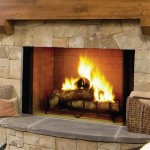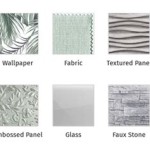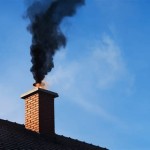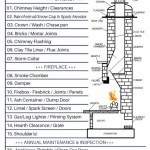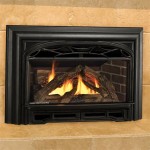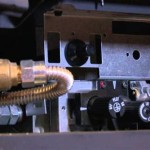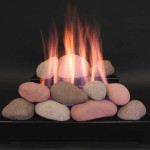Selecting and Applying Paint for a Fireplace Firebox: A Comprehensive Guide
The firebox of a fireplace, the interior chamber where the fire burns, is subjected to extreme temperatures and harsh conditions. Standard paints are unsuitable for this environment, as they will blister, peel, and emit noxious fumes. Selecting and applying the appropriate paint is crucial for both the aesthetic appeal and functional safety of a fireplace. This article explores the key considerations when choosing and applying paint specifically designed for fireboxes.
The primary function of firebox paint is to provide a durable, heat-resistant coating that can withstand the cyclical heating and cooling inherent in fireplace use. This coating not only protects the firebox materials from direct flame impingement but also enhances the overall look of the fireplace. A well-maintained firebox contributes to a safer and more efficient burning experience.
Understanding the Requirements for Firebox Paint
The high temperatures within a firebox necessitate paint formulations that are significantly different from those used for general interior or exterior applications. Several key properties are essential for a paint to be suitable for this purpose. Heat resistance is paramount. The paint must be able to endure temperatures typically ranging from 1200°F (649°C) to 2000°F (1093°C) or even higher, depending on the intensity of the fire and the type of fuel burned. Standard paints will fail quickly under these conditions, potentially creating a fire hazard or releasing toxic fumes.
Durability is also crucial. The paint must resist cracking, peeling, and blistering even after repeated exposure to high heat. It also needs to withstand the abrasive action of ash and soot. A paint designed for fireboxes should also be able to adhere properly to the firebox material, which is typically brick, steel, or cast iron. Proper adhesion prevents the paint from flaking off over time, maintaining its protective and aesthetic qualities.
Furthermore, the paint must be non-toxic and low-VOC (Volatile Organic Compounds). When heated, standard paints can release harmful chemicals into the air, posing a health risk. Firebox paints are formulated with materials that minimize the release of fumes, even at high temperatures. Low-VOC options contribute to a healthier indoor environment, particularly during and after fireplace use.
Finally, aesthetics play a role. While functionality is the primary concern, the paint should also provide a visually appealing finish. Most firebox paints are available in black, which offers a classic and practical look that helps to conceal soot and ash. However, some manufacturers offer other colors or finishes, enabling homeowners to customize the appearance of their fireplace.
Selecting the Right Type of Firebox Paint
Several types of paints are available for firebox applications, each with its own characteristics and suitability for different situations. High-temperature aerosol paints are perhaps the most common and readily available option. These paints are typically formulated with heat-resistant resins and pigments, offering a convenient and easy-to-apply solution. Aerosol sprays are ideal for reaching tight spaces and providing a uniform coating.
However, it is essential to choose an aerosol paint specifically labeled for fireboxes or high-temperature applications. Many aerosol paints marketed for general use are not suitable and will fail quickly when exposed to extreme heat. Always check the product specifications to ensure it meets the temperature resistance requirements of the firebox.
Another option is brush-on or roll-on firebox paint. These paints offer greater control over the application process and can be more economical for larger fireboxes. They also tend to provide a thicker and more durable coating than aerosol paints. Brush-on paints are particularly useful for touching up damaged areas or applying multiple coats for enhanced protection.
For more specialized applications, such as painting a cast iron fireback, consider using a heat-resistant stove paint. These paints are specifically designed for use on stoves and other appliances that generate high heat. They typically offer superior durability and resistance to cracking or peeling compared to standard firebox paints.
Regardless of the type of paint chosen, it is critical to carefully read and follow the manufacturer's instructions. This includes preparing the surface properly, applying the paint in the recommended thickness, and allowing sufficient drying time before using the fireplace.
Preparing the Firebox for Painting
Proper surface preparation is essential for achieving a durable and long-lasting paint finish. The firebox must be thoroughly cleaned and free of any loose debris, rust, or old paint. Neglecting this step can compromise the adhesion of the new paint and lead to premature failure.
Begin by removing all ash, soot, and other debris from the firebox using a wire brush and a shop vacuum. A scraper may be necessary to remove stubborn deposits. If the firebox has areas of rust, use a wire brush or sandpaper to remove the rust down to the bare metal or brick. For heavily rusted areas, a rust converter can be applied to stabilize the remaining rust and provide a better surface for the paint to adhere to.
If the firebox has been previously painted, any loose or peeling paint must be removed. This can be done using a scraper, wire brush, or sandpaper. Feather the edges of the remaining paint to create a smooth transition with the bare surface. If the old paint is in good condition, it may be possible to paint over it, provided that it is compatible with the new paint. However, it is always best to remove as much of the old paint as possible for optimal adhesion.
Once the firebox is clean and free of debris, it should be thoroughly degreased. Use a strong detergent or degreaser to remove any oil, grease, or soot that may have accumulated on the surface. Rinse the firebox thoroughly with clean water and allow it to dry completely before applying the paint.
For brick fireboxes, it is also important to ensure that the brick is not damp. Moisture can prevent the paint from adhering properly and lead to blistering or peeling. If the brick is damp, allow it to dry for several days before painting.
Finally, consider masking off any areas that you do not want to paint, such as the fireplace surround or hearth. Use painter's tape and drop cloths to protect these areas from overspray or drips.
Applying the Firebox Paint
Once the firebox is properly prepared, the paint can be applied. Follow the manufacturer's instructions carefully regarding application techniques, drying times, and safety precautions. Before starting, ensure adequate ventilation in the room. Open windows and doors, and consider using a fan to circulate air. Wear appropriate personal protective equipment, including gloves, a mask, and eye protection.
If using an aerosol paint, shake the can vigorously for several minutes before spraying. Hold the can approximately 10-12 inches from the surface and apply the paint in thin, even coats. Avoid applying too much paint in one coat, as this can lead to drips, runs, and uneven drying. Overlap each pass slightly to ensure complete coverage. Allow each coat to dry thoroughly before applying the next.
If using a brush-on or roll-on paint, use a high-quality brush or roller designed for the type of paint being used. Apply the paint in thin, even coats, working in small sections at a time. Avoid applying too much pressure to the brush or roller, as this can cause the paint to sag or run. Allow each coat to dry thoroughly before applying the next.
For both aerosol and brush-on paints, it is typically recommended to apply two or three coats for optimal coverage and durability. Pay particular attention to areas that are exposed to direct flame, such as the back and sides of the firebox. These areas may require additional coats of paint for added protection.
After applying the final coat, allow the paint to dry completely before using the fireplace. The drying time will vary depending on the type of paint used and the ambient temperature and humidity. Consult the manufacturer's instructions for specific drying times. It is generally recommended to allow the paint to cure for several days before exposing it to high heat. This allows the paint to fully harden and develop its maximum heat resistance.
Some paints may require a heat-curing process to achieve their full heat resistance. This typically involves gradually increasing the temperature of the firebox over a period of several hours. Consult the manufacturer's instructions for specific heat-curing procedures.
Finally, after the paint has fully dried and cured, inspect the firebox for any imperfections or areas that may require touch-up. Use a small brush or aerosol can to touch up any damaged areas. With proper preparation and application, a well-painted firebox can provide years of reliable service and enhance the beauty of any fireplace.

How To Paint A Fireplace Firebox Fox Hollow Cottage

How To Paint A Fireplace Firebox Fox Hollow Cottage

How To Paint A Fireplace Firebox Fox Hollow Cottage

How To Paint The Inside Of A Fireplace Simple Upgrade Maria Louise Design

How To Paint The Inside Of A Fireplace Simple Upgrade Maria Louise Design

Painting The Interior Of A Fireplace Shine Your Light

How To Paint A Brick Fireplace Young House Love

Paint Inside Of Your Fireplace South House Designs

How To Paint Inside A Fireplace An Updated Look Painting

How To Paint A Fireplace Box

